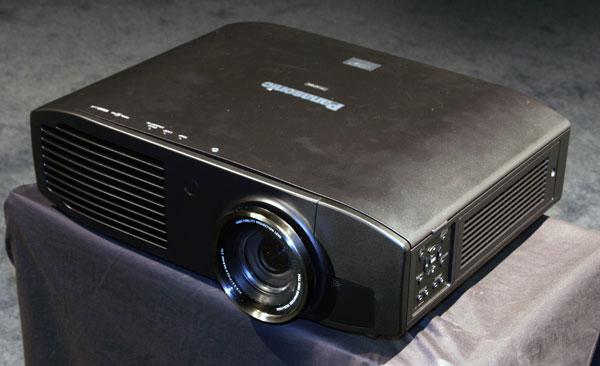I've long wanted to see Home Theater review more of the projectors in the sub-$5000 piece category. I'm also salivating over this particular projector. By the way, the rumors are that the new Epson uses the exact same panels(I guess in the past they kept the best 3LCD panels for themselves).
Panasonic Unveils PT-AE7000U 3D LCD Projector

Using active-shutter glasses with an integrated IR transmitter, the AE7000U claims to be the world's first 1080p 3D projector based on transmissive LCD panels driven at 480Hz, which means that, in 3D mode, each eye is shown 240Hz. And like the previous PT-AE4000U, the new model can interpolate new frames between those coming from the source. But also like its predecessor, it interpolates at 120Hz in 2D (120Hz for each eye in 3D), so there are some repeated frames in any event.
The higher driving frequency is said to contribute to a significant reduction in crosstalk, one of the design goals for the AE7000U. Another goal was to increase the brightness and contrast using a higher-power, red-rich lamp, new LCD panels with greater aperture ratio, and improved dynamic iris. The results are reflected in the specs—2000 lumens of light output and a dynamic contrast ratio of 300,000:1, as opposed to 1600 lumens and 100,000:1 for the AE4000U.
Among the 3D features is a newly developed dual-core video processor that can be adjusted independently for the left and right images in a split-screen mode. Even more interesting is the ability to adjust the depth of the 3D image, allowing you to maximize viewing comfort for different screen sizes—though I didn't see much difference in the image as a representative changed this setting. Finally, any 2D content can be converted to 3D in real time.
Features retained from the AE4000U include the rare and wonderful Intelligent Lens Memory that lets you store zoom and focus settings for 16:9 and 2.35:1 without the need for an anamorphic lens, and the projector can automatically select the right setting depending on the input signal. Also, SmoothScreen reduces the appearance of boundaries between pixels, though these boundaries are smaller to begin with in the new model.
We were shown side-by-side 2D clips from the AE7000U and AE4000U, and the newer model was certainly brighter and punchier with more vibrant color and deeper blacks. In some clips—especially "Time Warp" from The Rocky Horror Picture Show— the AE4000U looked positively wimpy by comparison. In fact, the new model might have been a bit overwrought, but there's no way to tell what it's really capable of in a short demo.
Of course, they also showed clips from Avatar, and the 3D was very effective with no visible crosstalk. However, I thought the image was dimmer than I've seen from some other active-glasses 3D projectors, which was surprising given the high-power lamp and the relatively small image size.
The PT-AE7000U is slated to be available in September for a list price of $3500. That makes it among the least-expensive—if not the least-expensive—1080p 3D projector on the market. Unfortunately, the division of Panasonic that handles these projectors has not been forthcoming with review samples over the last few years, and many of us complained about this at the event, so I hope the company finds a way to shake loose a few samples for us to review.
- Log in or register to post comments






























































